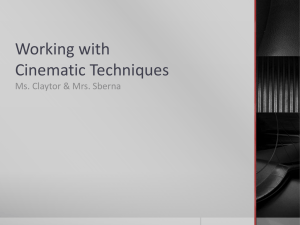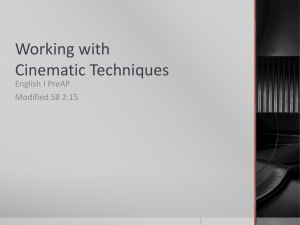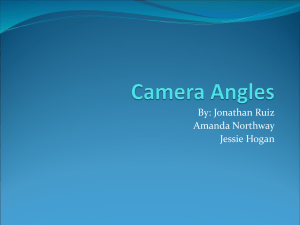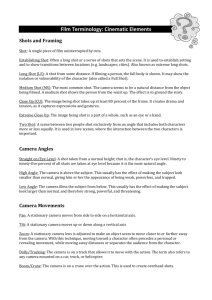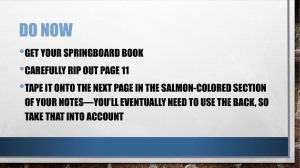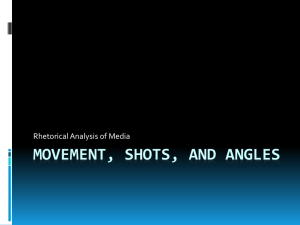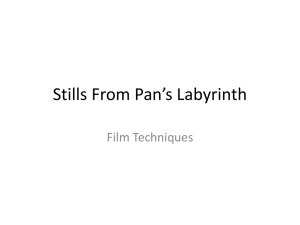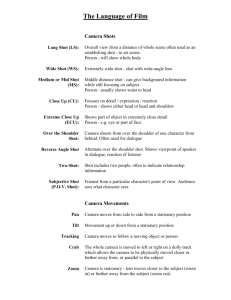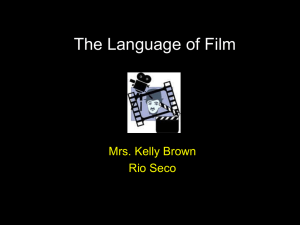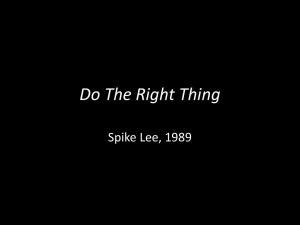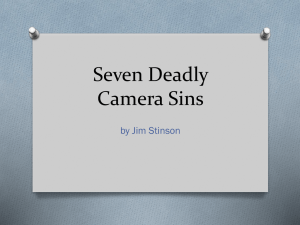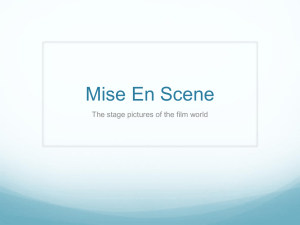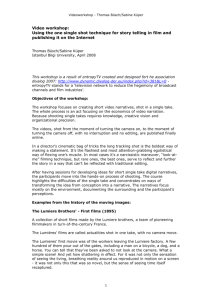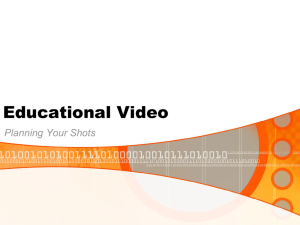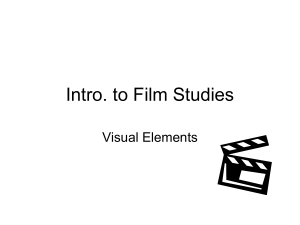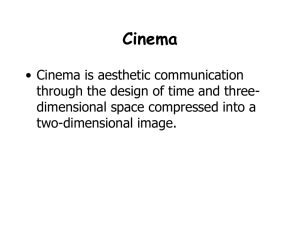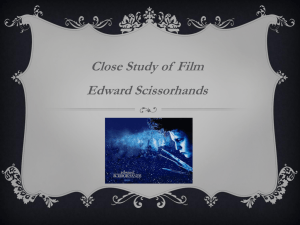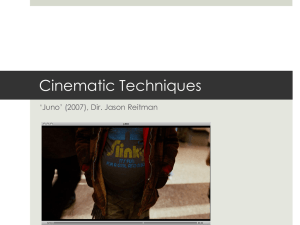visual techniques in film Springboard Activity 1.4
advertisement
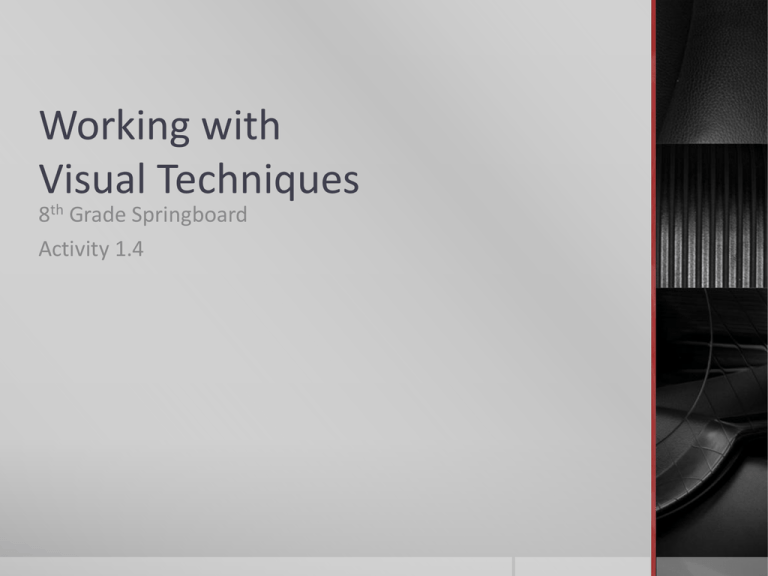
Working with Visual Techniques 8th Grade Springboard Activity 1.4 Film Analysis Much like how a writer uses stylistic devices to achieve specific effects in their writing, directors use cinematic techniques in their films for specific purposes. In order to analyze a film through critical viewing like you do a text in critical reading, you must understand the tools that filmmakers use to create their visual masterpieces. Follow along on pg. 11 in your SpringBoard book as we look at examples of the various cinematic techniques that directors have at their disposal and also discuss what the use of that technique reveals or adds to the piece. Take Cornell Notes in your ISN. SHOTS and FRAMING, CAMERA ANGLES and CAMERA MOVEMENTS All compare to how a writer uses POINT OF VIEW Shot: a single piece of film uninterrupted by cuts Of course, different shot types, angles and movements achieve different effects ESTABLISHING SHOT - Often a long shot or a series of shots that sets the scene; it used to establish setting and to show transitions between locations From the TV Show “Seinfeld” FRAMING-borders of the image; a single shot can be thought of as a frame for the picture. LONG SHOT – a short from some distance. If filming a person, the full body is shown. It may show the isolation or vulnerability of the character From the movie “Titanic” MEDIUM SHOT – the most common shot. The camera seems to be a medium distance from the object being filmed. A medium shot shows the person from the waist up. The effect is to ground the story. From the movie “Spiderman 2” CLOSE UP – the image takes up at least 80 percent of the frame From the movie “The Shining” EXTREME CLOSE UP – the image being shot is a part of a whole, such as an eye or a hand CAMERA ANGLES EYE LEVEL – a shot taken from normal height; that is, the character’s eye level. Ninety to ninety-five percent of the shots seen are eye level, because it is the most natural angle. From the movie “Toy Story” HIGH ANGLE – the camera is above the subject. This usually has the effect of making the subject look smaller than normal, giving him or her the appearance of being weak, powerless or trapped. From the movie “Psycho” LOW ANGLE – the camera films subject from below. This usually has the effect of making the subject look larger than normal, and therefore strong, powerful, and threatening. From the movie “Alice in Wonderland” CAMERA MOVEMENTS Use of Dolly/Tracking and Boom/Crane to shoot “Transformers” CAMERA POINT OF VIEW SUBJECTIVE-A shot taken from the character’s point of view, as though the camera lens is the character’s eyes. OBJECTIVE- A shot from a neutral point of view, as though the cameral lens is on the outside, objective witness to the events as they unfold. From “The Karate Kid” LIGHTING Compares to how a writer establishes tone and mood in their work Lighting creates significant emotional responses from the audience based on what people associate with light and darkness Lighting effects clarity, realism and emotion HIGH KEY – the scene is flooded with light; creating a bright and open-looking scene From the movie “Shawshank Redemption” LOW KEY – the scene is flooded with shadows and darkness, creating suspense and suspicion From the movie “Insidious” Bottom or Side Lighting – direct lighting from below or the side, which often makes the subject appear dangerous or evil From the movie “The Blair Witch Project” Front or Back Lighting – soft lighting on the actor’s face or from behind which gives the appearance of innocence or goodness, or a halo effect. From the movie “The Princess and the Frog”
